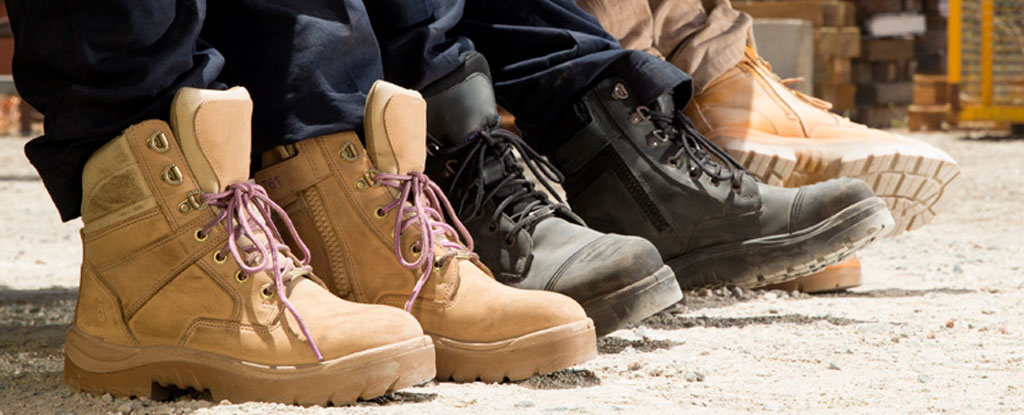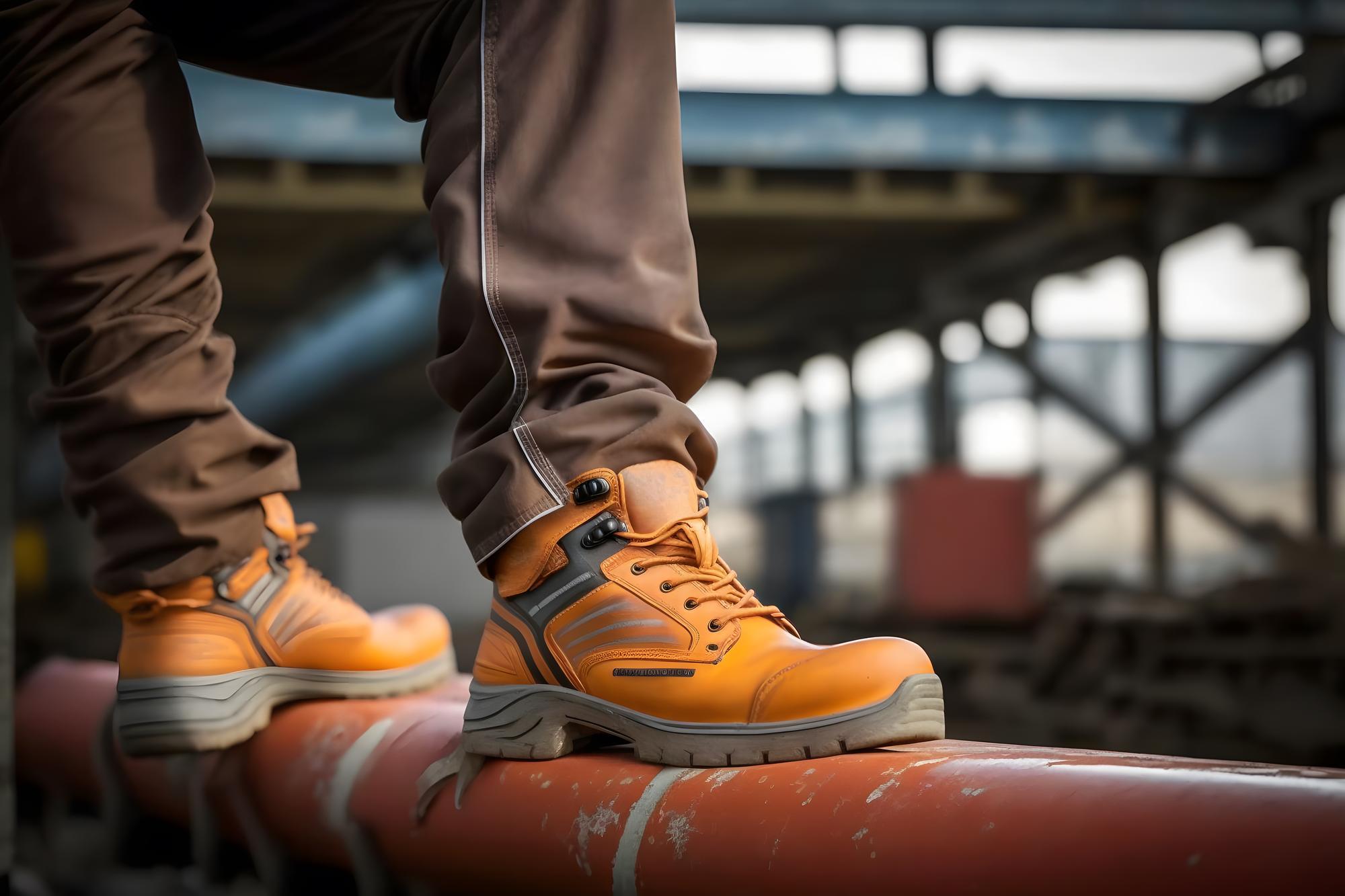What Are You Looking For?
In the world of international trade, safety shoes are not just a commodity; they are a crucial part of personal protective equipment (PPE) across various industries. Different regions have established their own standards to ensure these shoes effectively safeguard the wearer. Let's explore the key standards and those important safety shoe terms like SB, SBP, S1, S1P, S2, and S3.

Global Standards for Safety Shoes
Chinese National Standard (GB) As of 2021, China implemented the "Foot Protection - Safety Shoes" (GB21148 - 2020). This standard replaced several previous ones, such as GB12011 - 2009, GB21146 - 2007, GB21147 - 2007, and GB21148 - 2007. The Chinese standard details requirements for safety shoes in terms of protective functions, including protection against impact, puncture, electricity, and more. It also sets specifications for materials, construction, and testing methods. For example, in the test of toe cap impact resistance, specific parameters regarding the weight of the impact hammer, impact height, and allowable deformation of the toe area are clearly defined.
European Standard (EN ISO 20345)
This is a widely - recognized standard across Europe. It outlines both minimum and optional requirements for safety footwear. At its core, safety shoes under this standard must have a protective toe cap capable of withstanding a 200 - joule impact, equivalent to a 20 - kg weight dropping from a height of 1,020 mm onto the toe. The standard also covers aspects like compression resistance (with a 15 - KN test representing 1.5 tons on the toe area), slip resistance, and additional protective features against various workplace hazards. EN ISO 20345 is further divided into different categories, which are closely related to the safety shoe terms we often see.
American Standard (ASTM)
The American Society for Testing and Materials (ASTM) sets the safety footwear standards in the US. For example, the ASTM F2413 - 18 standard for protective - toe footwear details requirements for impact and compression resistance, electrical hazard protection, and more. Labels on safety shoes in the US will often include information related to these standards, such as I/75 for impact resistance (where 'I' stands for impact and 75 represents a certain impact - energy rating in pounds), C/75 for compression resistance, and other abbreviations like EH for electrical - hazard resistance and SD for static - dissipative properties.
Unraveling Safety Shoe Terms
SB (Safety Basic)
SB - rated shoes are the most fundamental type in the S - class safety shoes according to the European standard. They feature a steel toe cap, providing essential protection against impact. This means they can withstand a 200 - joule impact, safeguarding the toes from falling objects. However, they do not have a steel plate for puncture protection and lack anti - static properties. SB - class shoes are suitable for workplaces where the main risk is objects dropping onto the feet, such as some construction sites or warehouses with basic material handling operations.
SBP
SBP safety shoes are an upgrade from SB. In addition to the steel toe cap for impact protection, they are equipped with a steel plate in the mid - sole. This addition gives them the ability to resist punctures, making them suitable for environments where there are risks of stepping on sharp objects, like nails or metal scraps, in addition to falling objects. These shoes are commonly used in industries such as construction, mining, and waste management.
S1
S1 - class safety shoes have a steel toe cap for impact protection, just like SB shoes. But they also incorporate anti - static properties. Static electricity can build up during work, especially in environments with a lot of movement or friction, and this can be a hazard, especially around sensitive electronic equipment or in areas where flammable substances are present. The anti - static feature in S1 shoes helps to dissipate this static charge, reducing the risk of electrostatic discharge. They are often used in electronics manufacturing plants, laboratories, and some industrial settings where static control is important.
S1P
S1P shoes combine the features of S1 and SBP. They have a steel toe cap for impact protection, anti - static properties, and a steel plate in the mid - sole for puncture resistance. This makes them highly versatile and suitable for workplaces with a combination of risks, such as construction sites that also involve working with electrical equipment or areas where there are both sharp objects on the ground and a need to control static electricity, like in some automotive manufacturing facilities.
S2
S2 - rated safety shoes build on the features of S1. They have a steel toe cap, anti - static properties, and an added benefit of water - resistant uppers. The water - resistant treatment on the upper part of the shoe, usually the leather or fabric part that covers the foot, helps to keep the feet dry in wet working conditions. This could be in environments like outdoor construction during rainy days, food and beverage processing plants where water is used extensively, or in some agricultural settings.
S3
S3 safety shoes are the most comprehensive in terms of protection among these common terms. They possess all the features of S2, including a steel toe cap, anti - static properties, and water - resistant uppers, and also have a steel plate in the mid - sole for puncture resistance. These shoes are ideal for workplaces with multiple hazards, such as oil rigs, where there are risks of falling objects, sharp tools, water exposure, and static electricity.
Other Common Safety Shoe Markings
NM: This stands for "No Metal". Shoes marked with NM are designed to be completely free of metal components. This is important in certain industries, such as in areas where metal detectors are used regularly, like security checkpoints in airports or some sensitive manufacturing facilities. Instead of metal, they may use plastic or composite materials for the toe cap and other parts, providing similar protection without the risk of triggering metal detectors.
M: "M" indicates that the shoes are equipped with insulation materials like thermal linings or thick padding. This makes them suitable for cold - climate workplaces, such as in the Arctic regions for oil and gas exploration or in cold storage facilities, where the insulation helps to keep the feet warm.
WR: Signifying "Water - Resistant", WR - marked shoes have undergone tests to prove their ability to resist water penetration. In a standard test, the shoe upper is bent repeatedly in water for a specified time (e.g., 80 minutes), and the area of wetness inside the shoe should be within a certain limit (usually ≤3cm²). This ensures that the feet remain dry even when working in wet conditions.

TailorMax, a well - established player in the stock footwear and apparel market, has been increasingly involved in the trade of safety shoes. Recognizing the importance of safety shoe standards and terms in the international market, the company has been actively learning and adapting to these requirements. TailorMax ensures that its safety shoe stock complies with relevant standards, whether it's meeting the Chinese National Standard for domestic sales or aligning with European and American standards for international trade. By understanding the differences between SB, SBP, S1, S1P, S2, S3, and other markings, TailorMax can accurately market its safety shoes to different customers, catering to the specific needs of various industries. This commitment to understanding and adhering to safety shoe standards not only helps TailorMax stay competitive but also builds trust with its clients, ensuring that they receive high - quality, compliant safety footwear.